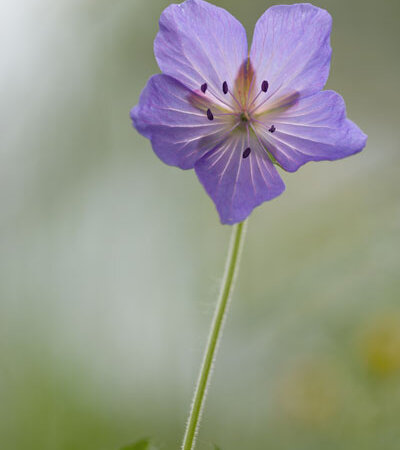(Geranium sylvaticum)
The blossoms of Wood Cranesbill offer plenty of nectar and pollen during their first bloom in June/July and their second bloom in autumn. Therefore it is visited by honey bees, wild bees, bumblebees, hoverflies and butterflies. Besides looking good as a companion plant in the garden, blossoms of Wood Cranesbill are also edible. The plant is extremely low-maintenance, disease-resistant and it is even avoided by snails.

Biodiversity
Wood Cranesbill
Cooperation "Biodiversity and Environmental Protection
As part of the educational initiative "Biodiversity and Environmental Education", a green lawn was transformed into a colourful, species-rich garden on this site by the pupils of the Längenfeld Primary School and Middle School Nature Park Schools.










